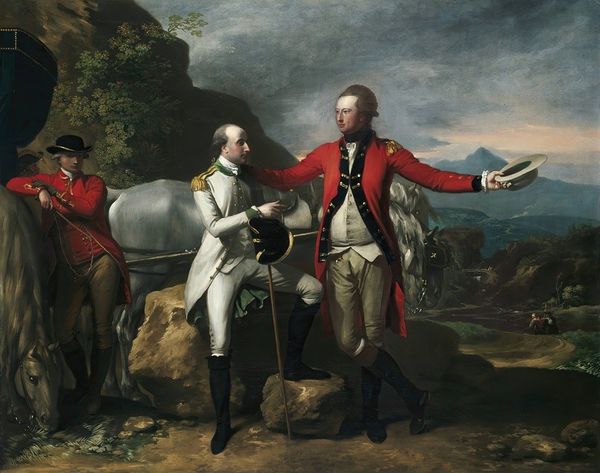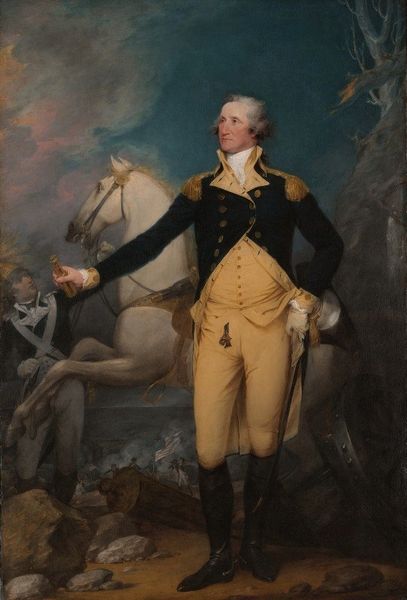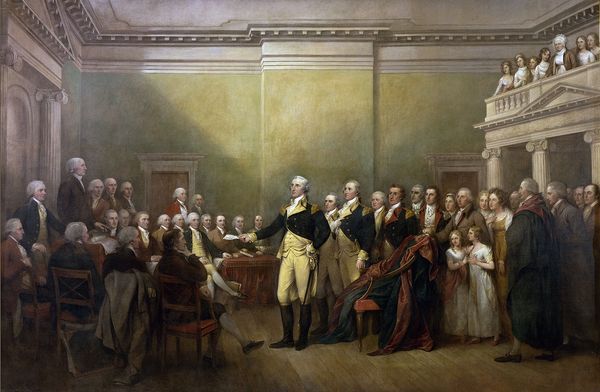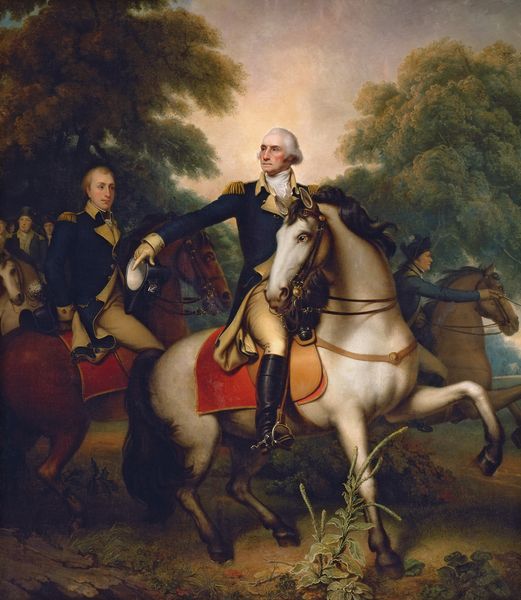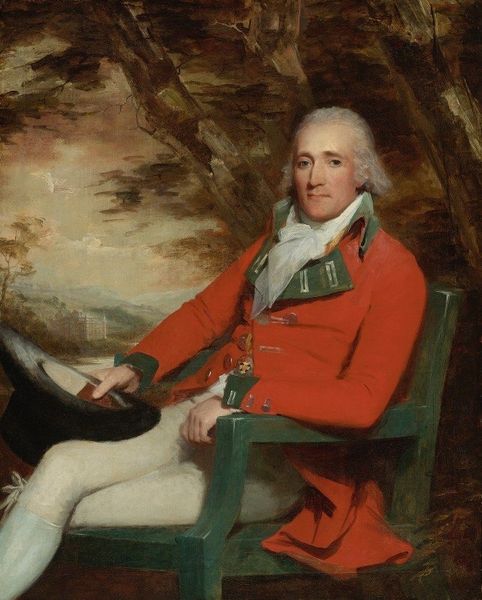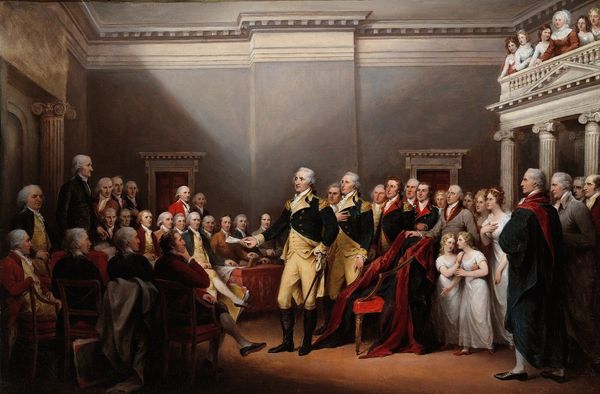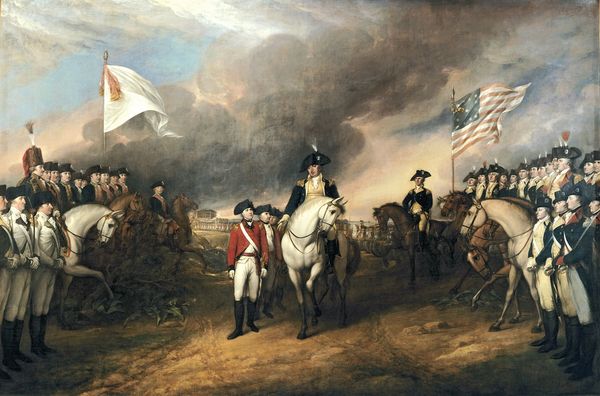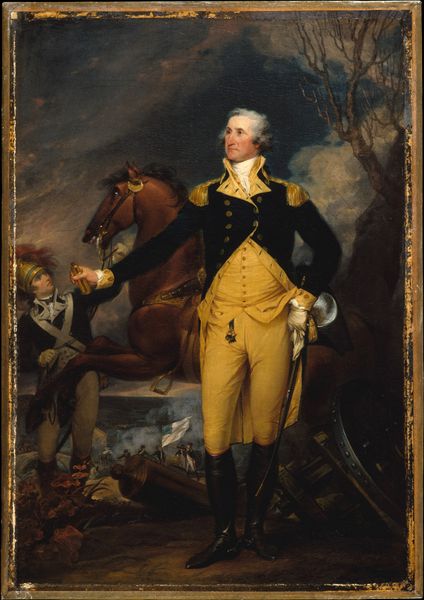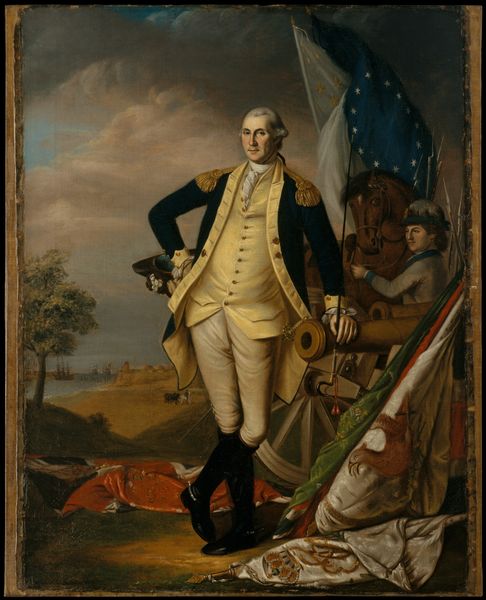
painting, oil-paint
#
portrait
#
figurative
#
neoclacissism
#
painting
#
oil-paint
#
landscape
#
group-portraits
#
history-painting
#
academic-art
Copyright: Public Domain: Artvee
Curator: Looking at "The Surrender of General Burgoyne at Saratoga, October 16, 1777" by John Trumbull, my initial feeling is a kind of reserved, almost serene triumph. What strikes you first? Editor: The neatness! It feels like a meticulously staged play. I wonder about the process of staging such a composition. Curator: Well, the painting is an oil on canvas, characteristic of the academic style Trumbull mastered. The figures' garments, landscape and even the implements of war would each involve careful labor, from creation of canvas to pigment processing and application. Editor: And how much of this 'history' is a fiction constructed with very specific materials? Look at the light hitting those white breeches of the American officers—a theatrical illumination! The whole canvas seems to subtly but surely glorify a cause. Curator: Indeed, Trumbull was keen to celebrate the American victory. It's a history painting, a genre intended to ennoble and instruct. Notice how he juxtaposes the British in red, humbled, with the composed Americans. Editor: It does feel meticulously composed to evoke a sense of righteousness. Though, one might ask, what of the human cost? Is it glossed over by the... the rather bloodless palette used here? Where's the dirt, the chaos of actual surrender? Curator: That is certainly a valid point. Perhaps he deliberately sanitized it. Considering the materials employed—high-quality pigments, fine linen canvas—this wasn't intended as raw reportage but as propaganda for a fledgling nation. Editor: Precisely! It’s not just a painting; it's a crafted object designed to solidify a particular narrative, built from layers of carefully chosen material, all contributing to its meaning. Curator: Agreed. So it's an artwork reflecting material resources used in ideological construction. Editor: A spectacle created through tangible materials! It gives pause, makes one think. Curator: Absolutely. It allows for a nuanced exploration of historical narratives within tangible bounds. Editor: Which deepens our experience of both art and history, ultimately! Thanks for revealing the making of this memory!
Comments
No comments
Be the first to comment and join the conversation on the ultimate creative platform.

